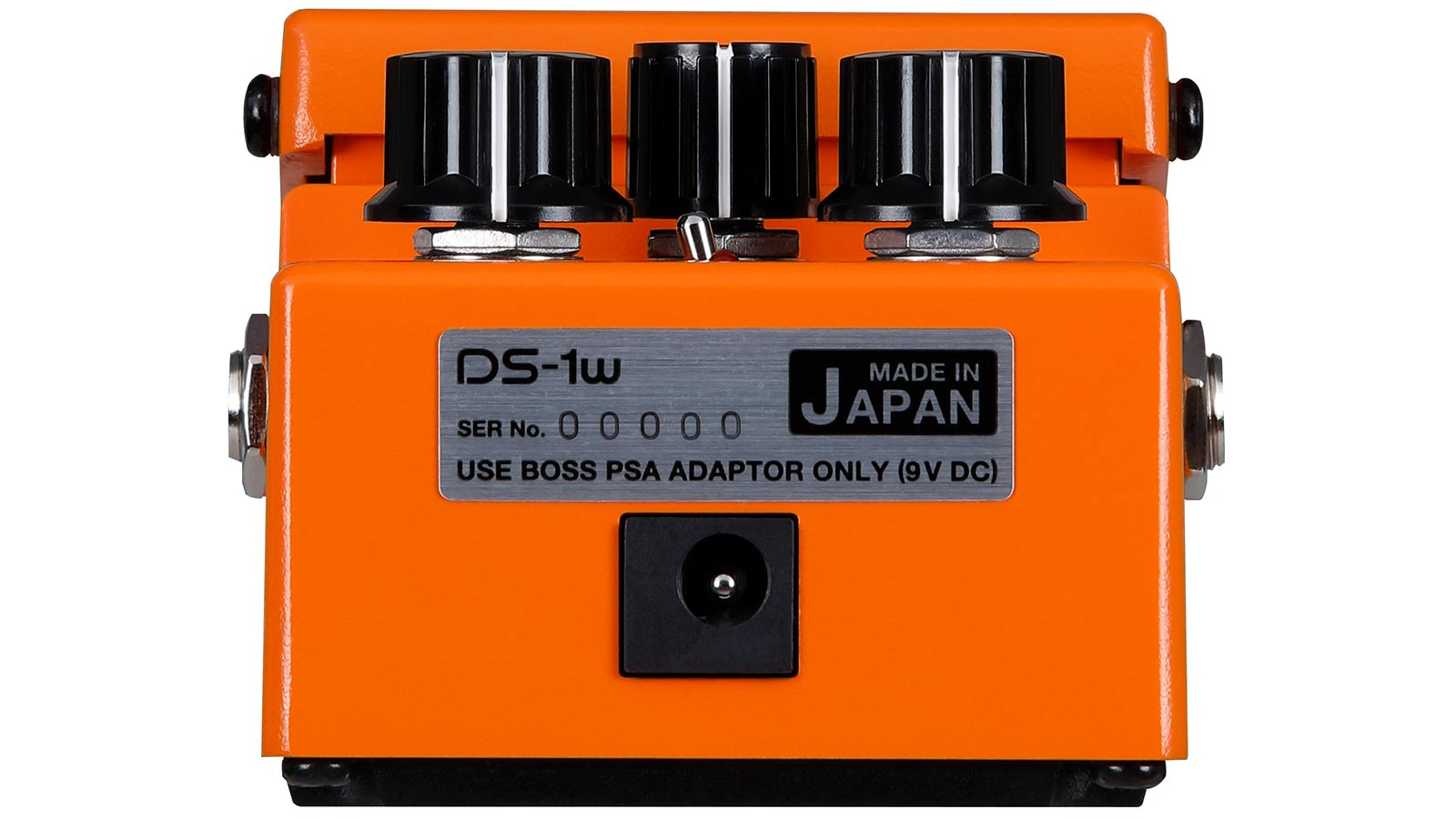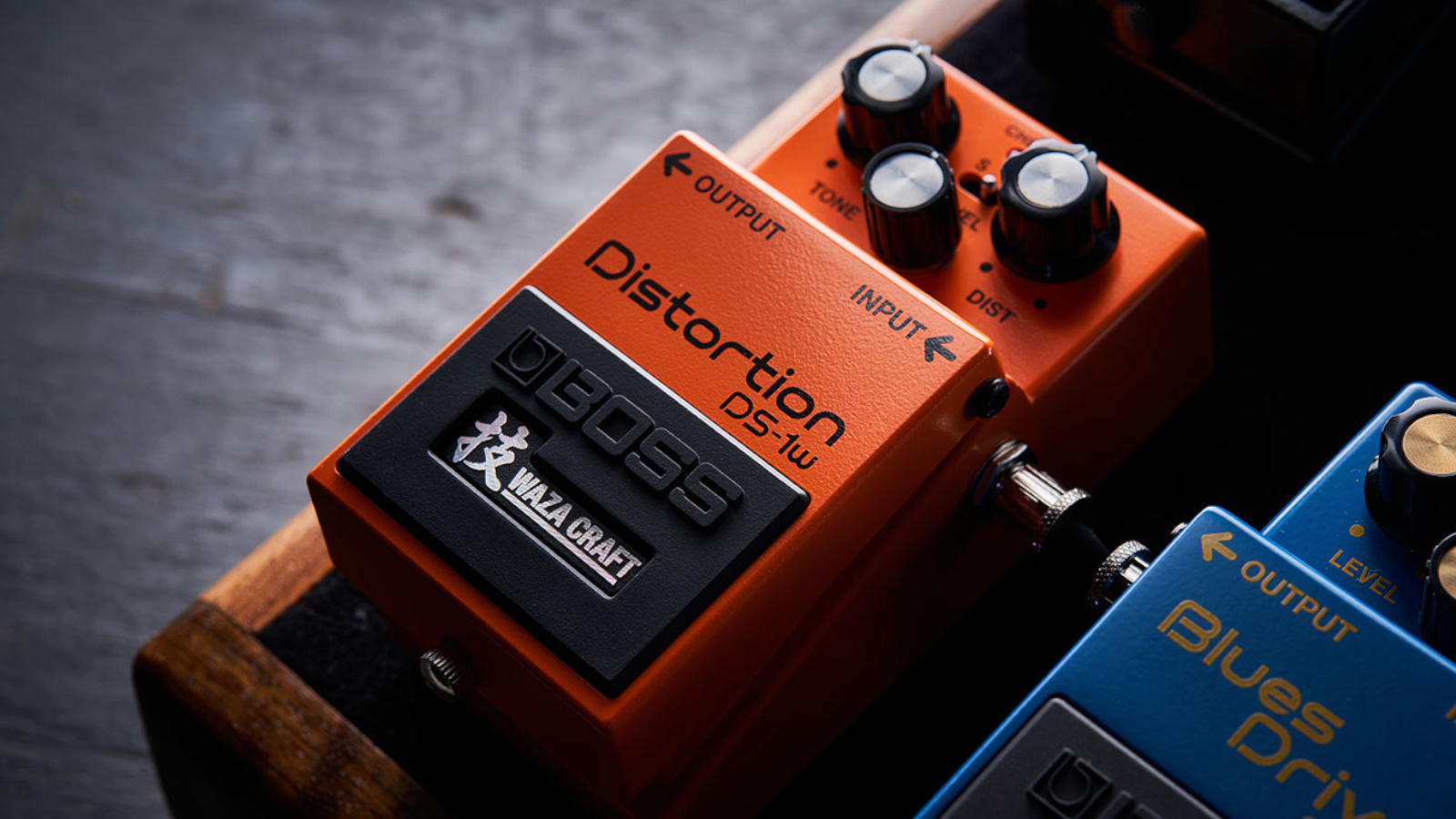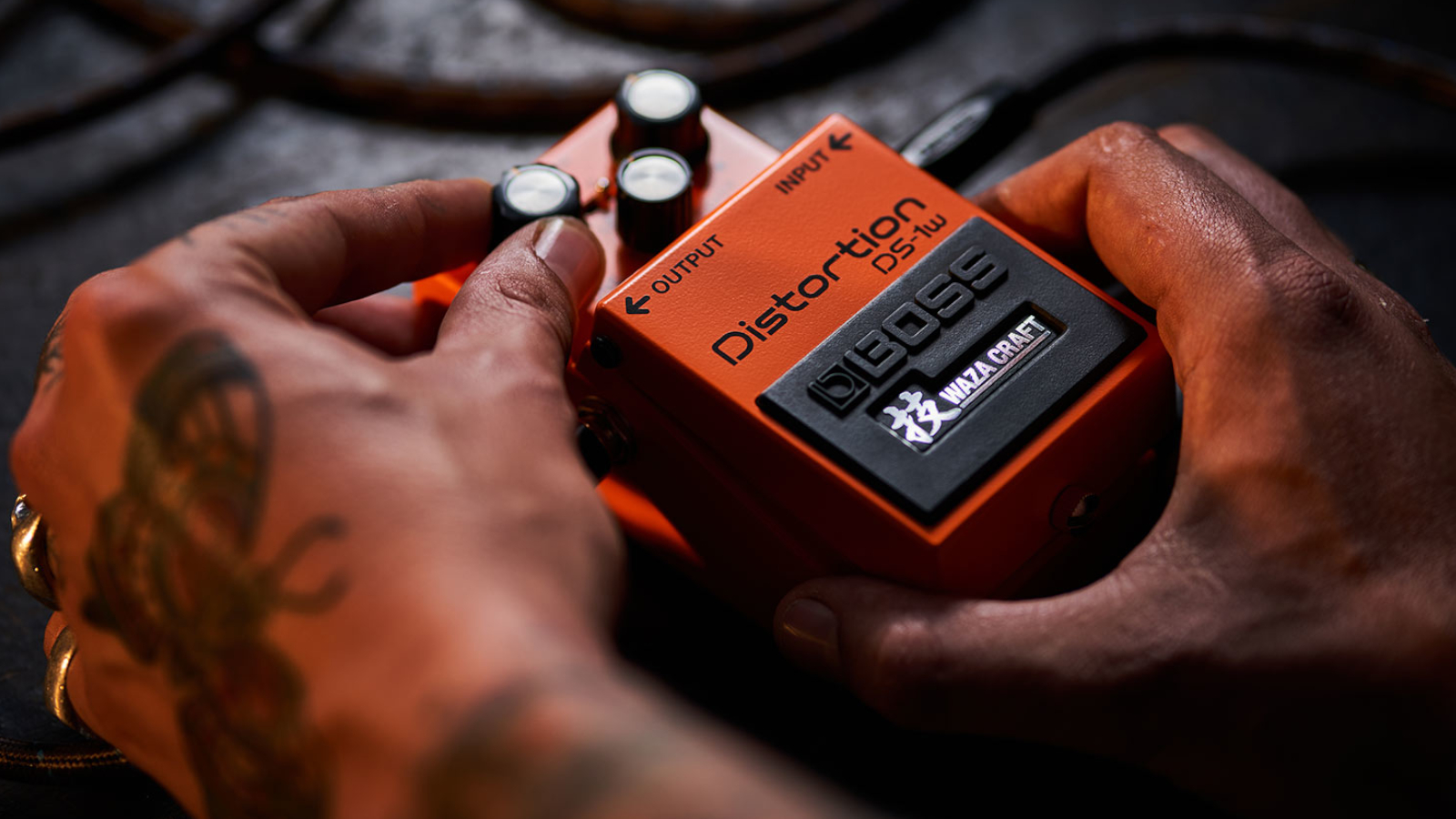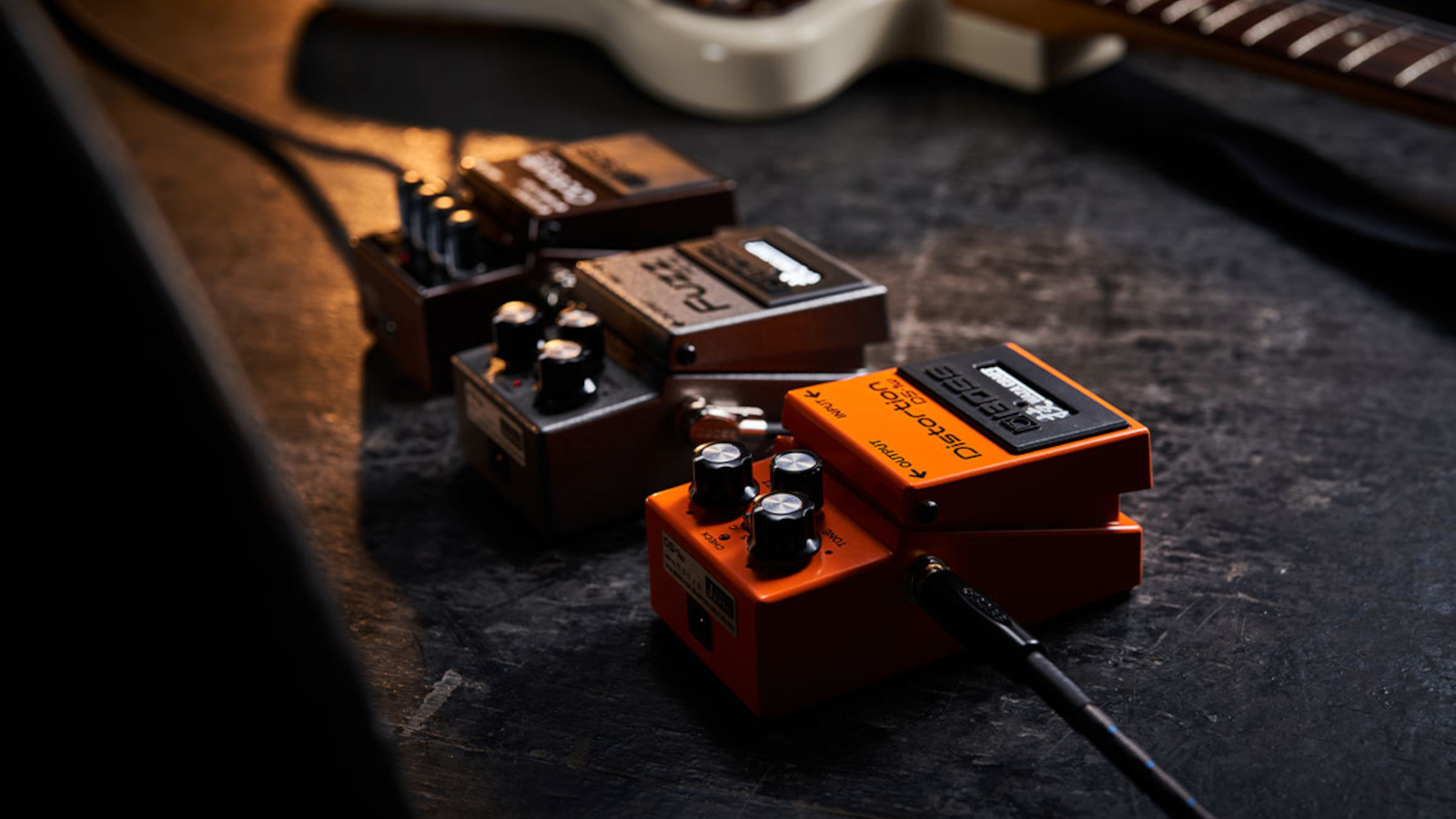GuitarPlayer Verdict
With better filtering, no fizz and a more stable high-gain distortion tone, the new DS-1W can punch through a busy mix with clarity
Pros
- +
Corrects issues related to volume drop, noise and fizzy top end found in the post-1994 models
Cons
- -
Missed opportunity to make the Custom mode truly unique
You can trust Guitar Player.
Introduced in 1978, the Boss DS-1 Distortion was the first such pedal released by Boss, arriving just two years after the release of the company’s debut pedal, the CE-1 Chorus Ensemble. For this reason, it was many players’ first distortion pedal.
Like the ProCo Rat that arrived the same year, the DS-1 used two hard-clipping diodes for an aggressive edge.
This became known as distortion, rather than the smoother overdrive of soft-clipping stompboxes.

The DS-1 was not op-amp based. Instead, it used the Toshiba TA7136AP preamplifier, for a gritty and warm overdrive tone. When the Toshiba preamp became harder to source, the circuit was redesigned in 1994. All three post-1994 DS-1 models would share the same circuit, and in turn, the same trio of quirks.
First, they were not very loud, a problem most noticeable in the 1994 block.
Second, they had significant noise at higher gain settings.
And third, fizzy top-end frequencies were not filtered out, resulting in an unpleasant “waspy” edge to the distortion tone.
All the latest guitar news, interviews, lessons, reviews, deals and more, direct to your inbox!

This led many players, as well as companies like Analog Man, to modify the stock unit. Boss has now given the DS-1 the boutique treatment with the new DS-1W Waza Craft unit shown here.
And while you might assume it hews to the specs of the original DS-1 pedal, the answer is somewhat more complicated. As you would expect, the DS-1W has controls for tone, level and distortion, but there is also a switch to select between Standard and Custom modes.
The great irony is that the pedal’s Standard setting is a faithful replication of the post-1994 DS-1 rather than the DS-1 with the Toshiba TA7136AP.

The Custom setting, on the other hand, feels like an attempt to fix all the inherent artifacts that come with the post-1994 design. Happily, it succeeds. There’s better filtering, no fizz and a more stable high-gain distortion tone.
The pedal is more mid-forward, punching through a busy mix far better than in Standard mode.
Finally, it’s 6dB louder, meaning that turning on the pedal no longer results in a volume drop. At higher settings, the clipping is a square-wave, thanks to the hard-clipping diodes, but it cleans up surprisingly well.
With humbuckers rather than single-coils it runs hotter, but there are some lower-gain tones there at a push.

The real question is why Roland engineers didn’t take the opportunity to make this mode Standard when it is so superior to the actual Standard mode. They could then have pushed the boat out even further with the Custom mode.
It feels like a slightly missed opportunity, but with that said, there are doubtless some players who have grown accustomed to the post-’94 DS-1 tone, which remains intact here.
For those who prefer the true original, the DS-1W is a two-mode pedal with only one usable mode, and at a price point where it’s outclassed by both other Boss pedals and competitors.
While the Custom mode is a vindication of the post-1994 unit, it rectifies rather than progresses the DS-1 story.
The modding and DIY community have already shown there’s a good pedal in there, and electric guitar players now have the chance to buy a Boss-approved modded DS-1 Distortion.

Specifications
- CONTROLS: Tone, level, distortion. Switch to select Standard or Custom modes
- I/O: Input, output, power
- EXTRAS: LED indicator. Pedal runs on 9V DC center-negative or 9V battery (neither included)
- SIZE: 2 3/8” x 2 7/8” x 5-1/8” (HxWxD)
- BUILT: Japan
Visit Boss for more information.
Alex Lynham is a gear obsessive who's been collecting and building modern and vintage equipment since he got his first Saturday job. Besides reviewing countless pedals for Total Guitar, he's written guides on how to build your first pedal, how to build a tube amp from a kit, and briefly went viral when he released a glitch delay pedal, the Atom Smasher.


